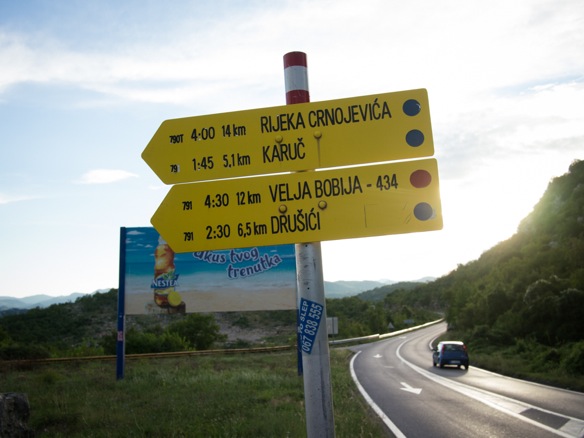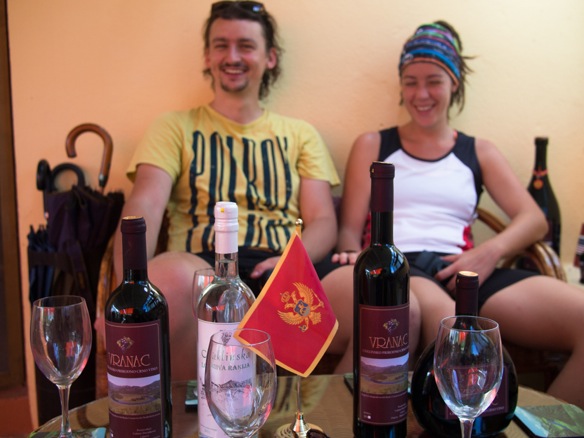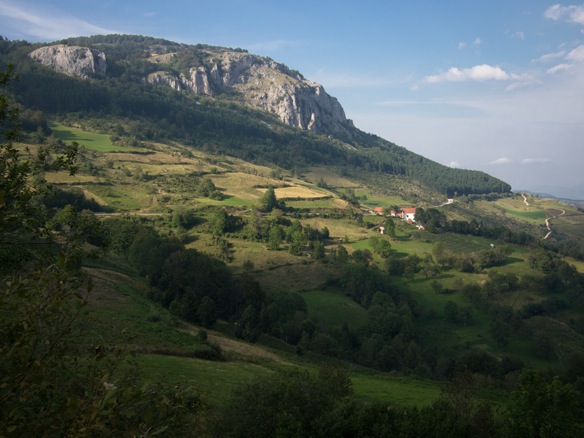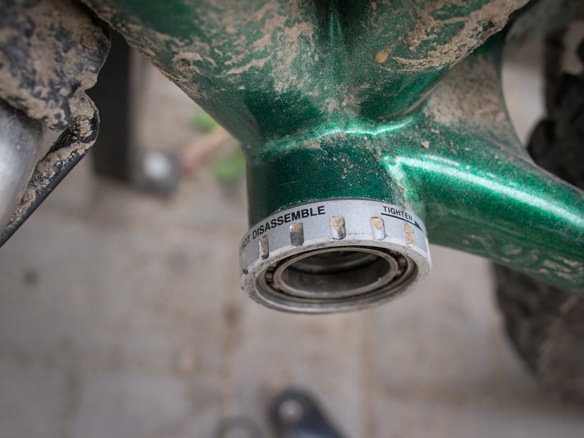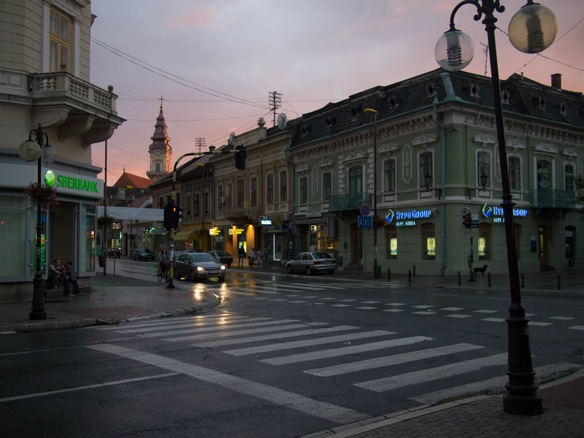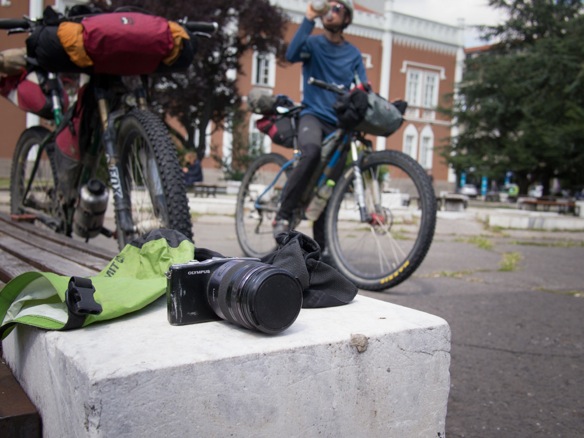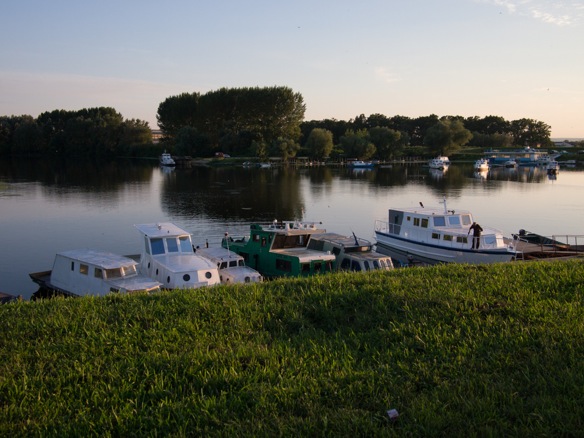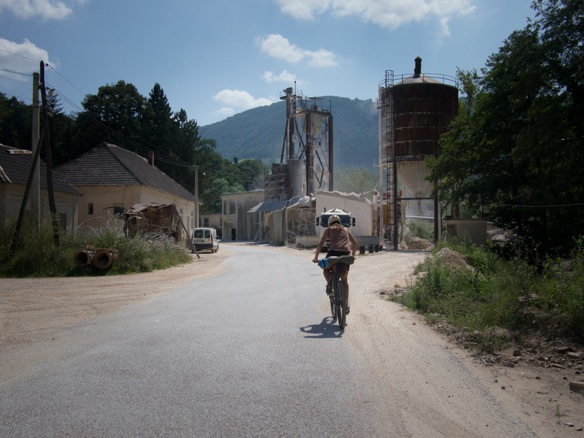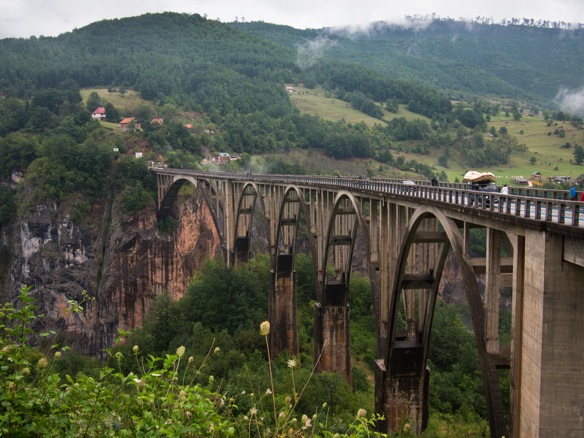
Come quick. It’s the best. There are mountains all over, and small villages, and dirt roads. Alternatively, there are bustling big cities and smooth paved roads in the mountains, nearly vacant, save for a shepherd and a man on a horse and a classic Mercedes every fifteen minutes.
Albanians will greet you, unabashedly, with a friendly “hello, where are you from?”
Albanians will invite you to their homes. They will kick their children out of their beds for you. They will feed you like kings and queens. And if you are American– lucky us!– they’ll buy you another beer at the cafe. Or the bag full of figs at the market is free. A big friendly thumbs up to Americans.
All the boys over a certain age ask to “giro” my “bicycleta”. The first few times I just smiled and nodded, not sure exactly what they were saying. They’d throw a leg over, smiling, and ride away. Now I know.
Albanians love Americans, for more than a few reasons, but mostly and most recently for the US support of Kosovo. Aside, Albanians like fancy cars and money and new things, all of which is assumed to grow on trees in America. Elsewhere, shepherds are shepherding, farmers are farming, and people are living. The clash of late-series Mercedes sedans and sheep is a daily occurrence. Grandmothers walk mountain roads with cows, a willow switch in one hand and a mobile phone in the other. Don’t try to speak Serbian, or Croatian, or Ukrainian, Russian, Macedonian, Slovenian, or Polish or any other Slavic variant; it’s all Serbian to them and they don’t want anything to do with it. The Albanian/Yugoslav border has been a region of great tension, marked by thousands of one-man concrete bunkers. These are things we notice with great curiosity.
The riding is great. The coffee is small. Water is clear. People are famously hospitable. Albania is amazing.
We cross the border from the coastal lowlands of Montenegro, in a region with an Albanian majority. Immediately, all roads lead to Shkodër. We seek a map and a route, and some Albanian currency.



Przemek is looking for a bottle cage to replace a broken cage. Some bicycle related things can be found at motorbike shops, hardware stores, or the market.

We blast through town, and make quick work of the map, currency, and other affairs. We’re out of town on an abandoned paved road to the north, toward Montenegro. We have some intel from a Polish cyclist which suggests a mountain road along the northern border of Albania, eventually crossing into Montenegro near Gusinje and Plav.

We turn off the main road on a lesser road toward Dedaj.

We stock up on goods. We later learn that stores are uncommon in rural Albania. Buke means bread, our first Albanian lesson. Second lesson: raki, like rakija, means homemade liquor.

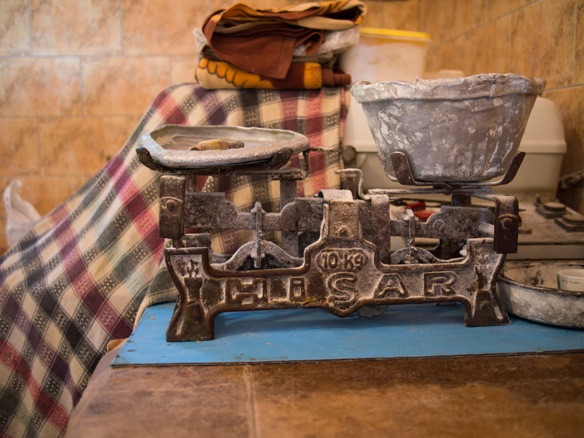


We turn left towards Zagora, Bratosh, and Kastrat, over a small mountain pass to another road further north. Turn left at the ominous monument with the noose.

This route can easily be made from Podgorica in Montenegro, although the ride around the lake is worth the extra time.

In our first mountain town, we discover several things. Men without business sit around most of the day, drinking coffee and smoking tobacco. Here, they play an excited game of dominoes. We fill our waters and ride on.

Into the evening, we climb away from the tentacles of the city.

Onto rocky roads, we climb. The road is lined with rock walls, and small trees with red fruits. We learn that these fruits, called thana, are most often used to make raki.

In Bratosh, at the town center, we inquire about a place to camp. The man who owns the store laughs, and says “anywhere”. We opt for the churchyard.





Soon, a man appears asking if we wish to sleep indoors. It will be cold he warns. We assure him that we are from Alaska (and Poland and Slovenia), and we will likely survive the night. Nonetheless, we tour the building.

While Catholics are but a small majority in this country, Albanian Catholics are proud to call Mother Teresa their own. She is Albanian, but was born in Skopje, which is now the capital of Macedonia. Both countries were part of the Ottoman Empire at the time. The pope makes his first visit to Albania this week, ever.



As we are preparing dinner, a group of young men begin banging around inside the church. They are making renovations to the choir loft. Without a common language, we help by hauling timber out into the yard.



In the morning, the store across the street comes to life. A group of men and the proprietress are hollering, about life or politics or coffee, I do not know. Within the hour, the store is again closed. The same thing happened last night for an hour or two.

Away from Bratosh, I stop to watch a man cooking something outside of his house. Naturally, he invites me to coffee.
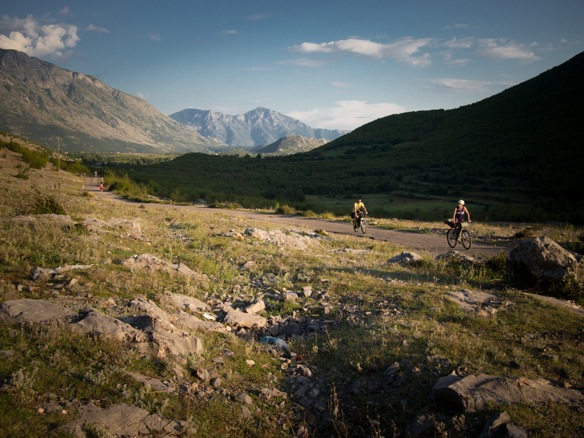
He’s making raki.

Amazing the things people make when they cannot be bought.



In fact, he beckons his daughter to prepare a warm cup of sheep’s milk for us, sweetened, of course.

And for the man, a small glass of raki. The drink is offered to me, but once they discover Lael is also interested, more glasses are summoned. Two more glasses are brought once Saŝka and Przemek discover our bikes laying by the roadside.

The man’s name is Konstantin, his daughter on the right, Konstantina.


And his twins, Samuel and Samuela. The concept of twins was curiously communicated with gestures. Use your imagination.

We descend from Bratosh toward the main road.


It seems the road has been paved.

Fresh asphalt, aged less than ten years, is not uncommon in Albania.

Przemek warns about a major climb coming up, as seen from his GPS. But, it is a descent. Back down to river level, at 500ft.




Near the bottom of the descent, we encounter the paving crews.

Graded dirt, en route to unimproved dirt. Hurry up and ride this stuff, before it disappears.

Of course, we swim at the bottom. Finally. No more rain. It is always sunny in Albania, I think.




We roll into the town of Tamare. The town welcomes us with a small tourist office, a fresh plaza, and several stores. A small army of German motorbikers indicate that we aren’t the first people to visit this place. But, the tourists may change after the road is paved.




Extra high fives for wheelies. Thumbs down for skidding. Properly tuned disc brakes are a novelty, in comparison to aging coaster brakes, or unhooked v-brakes. Albanian kids are fantastic. Lael has a great gallery of our favorite young Albanians.

The town has done a nice job to welcome tourists. Some shops offer local goods, and a handsome map has been published to indicate all the hiking and biking routes, as well as other features such as caves, old mills, and folkloric attractions.
Liquor and wine. A wide variety of berries are grown in the area, each at a unique elevation. Blueberries grow up high, figs are found down low.

Cheeses and mustached men.



Out of town, past the post office.

Now begins the kind of rides we seek.
















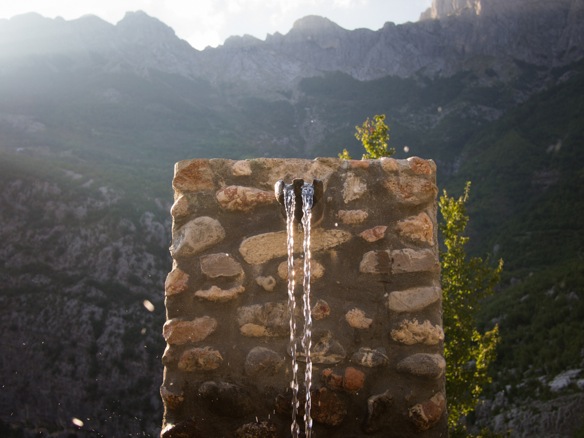



We camp for the night in a small grassy floodplain, before the final climb to Lepusha, and the descent to Vermosh. Albanian wine is worth it. We’ve had great wines from Albania, Montenegro, Serbia, Kosovo, and Macedonia. Bulk or vacuum-packed olives are available is most shops. Cheeses are exclusively of goat or sheep’s milk anymore.
Oh, and the Adidas kicks help me blend in. Paired with a pair of Adidas shorts (thanks Colin!), I call it my Serbian tuxedo.

I’ve spent six years under the Big Agnes Seedhouse SL2 tent. I purchased my third tent this summer, while the other two remain back home as pieces and parts. I’ve looked at other models, and tried one or two, but I always come back to this one. It’s stormproof and drab green, and the pack size and weight is agreeable.


The few towns in this valley are provided signs by the Albanian government to promote tourism. The signs indicate homes where food and lodging is available. It enables the local flavor to flourish, rather than stamping it out with hotels and fancy restaurants. Still, paved roads will change things.

That’s Montenegro over there, over those mountains. Around here. most of the borders are defined by mountains, which at once were essential barriers.

Additional protection comes in the form of small concrete bunkers, which are present at major geographic and topographic locations, such as mountains passes or canyons. This one currently resides in the front yard of a home. Each bunker features two horizontal slots, one in the direction of attack, and the other as a sightline to another bunker for communication. Up the way, a larger bunker would have radio communication to higher forces.


Nearing the border of Montenegro (formerly, of Yugoslavia), we encounter an array of bunkers. As they were meant, they are hard to spot at first. And then, they are everywhere. There were over 700.000 bunkers


Across the border, we’re off to Plav, Montenegro to connect with the Top Trail 3, billed as a route of “Eastern Enchantment”.

The route includes some of the locally advertised routes near Gusinje and Plav. The entire route is over 300km, mostly off-pavement, designed to be ridden with camping gear, although it also promises to be challenging. I highly recommend reading the free PDF of the brochure, the writing is exceedingly romantic.













